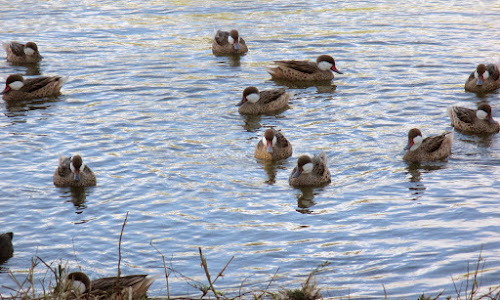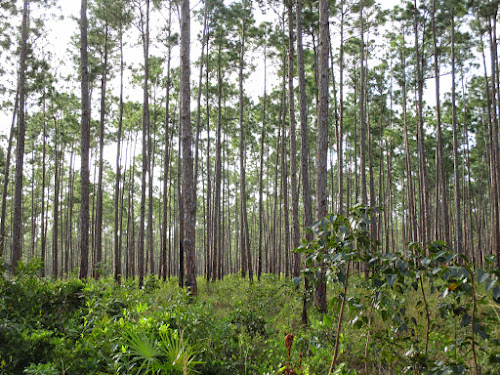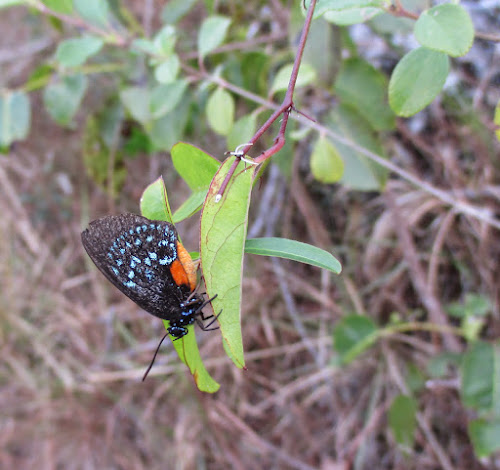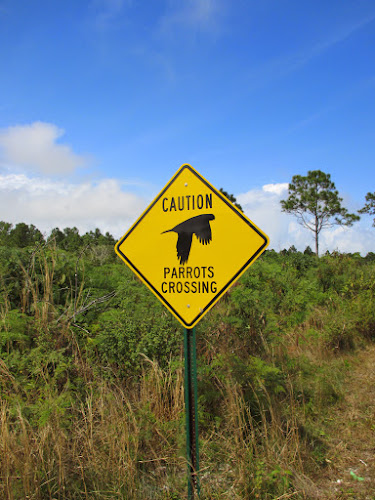March 1: Treasure Cay
Kristen Lindquist
This morning we headed north to Treasure Cay to meet up with emminent Bahama birder Woody Bracey, who graciously agreed to show us around for a few hours. Treasure Cay isn't an island per se, simply a peninsula, but it has the feeling of a wealthy, white enclave compared to the rest of Abaco that we had seen. For one thing, there's a golf course. Fortunately for us, a pond on this golf course hosts a flock of White-cheeked Pintails, a most beautiful Caribbean duck. Woody drove us right to them.
Next we walked the grounds of an old "nursery," a park-like place where we found a Barn Owl feather at the base of a palm, saw our first Loggerhead Kingbird, and got long looks at Cuban Emeralds feeding and fighting in a flower patch.
Then Woody fearlessly drove us up and down the rutted, overgrown roads of an old citrus farm, through fields being tilled by squatters--refugees from Haiti--and into the pine woods. We got better looks at the Bahama Warbler here. He told us about the wild horses of Abaco, a remnant herd whose Spanish ancestors were shipwrecked on the island centuries ago. It's vitality is close to being extinguished, however, as only one mare remains, though he said they were going to try to harvest her eggs. Apparently the woman who has spearheaded efforts on behalf of the horses also works on behalf of the "potcakes," the feral island dogs. The island is a real catchment of survivors, including human ones.
Single owl feather
tells a story of presence
and disappearance.
 |
| White-cheeked Pintails, Treasure Cay golf course pond |
 |
| View from "the nursery" garden |
 |
| Birding with Woody Bracey in the pine forest |









